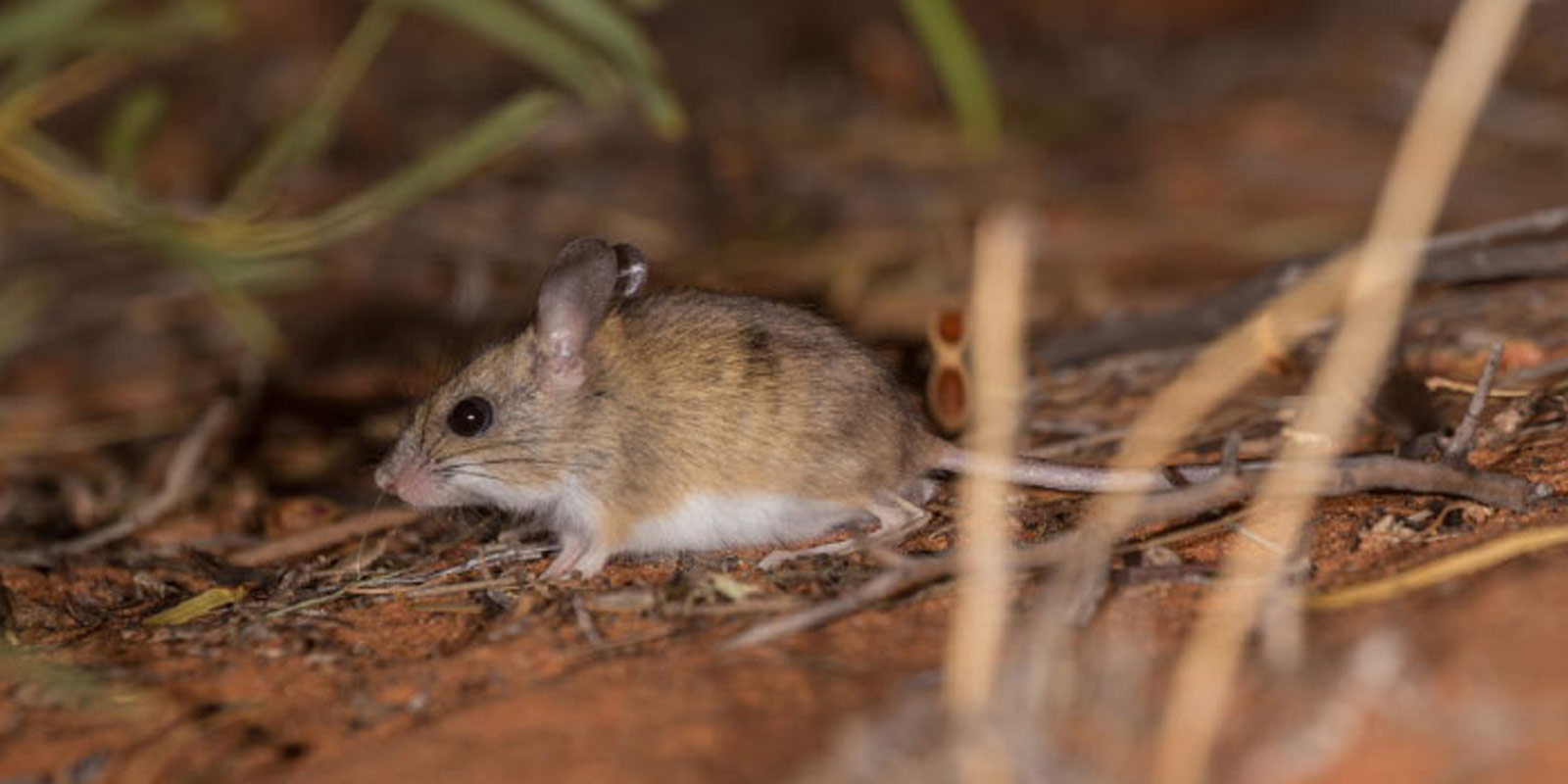Small Mammals
As many as seven species of small mammals have been recorded at Arid Recovery

Since 1998, Arid Recovery researchers have been monitoring small mammal populations both inside and outside the reserve. The feral-proof fence has significantly altered these small mammal communities
What has Arid Recovery learnt?
The fenced reserve is a haven for some small mammals
When the feral-proof fence was first erected at Arid Recovery, there was minimal disparity in the abundance of small mammals inside and outside the reserve. Since 1998, Arid Recovery has diligently monitored small mammal populations inside and outside the reserve through our annual pitfall and Elliott trapping surveys. The absence of cats and foxes has facilitated the proliferation of small mammal populations within the reserve, especially spinfex hopping mice (Notomys alexis) and the stripe-faced dunnart (Sminthopsis macroura).
-1600-x-950.jpg?lang=en-AU) Volunteers checking pitfall traps for small mammals
Volunteers checking pitfall traps for small mammals
-1600-x-950j.jpg?lang=en-AU) In recent years, more stripe-faced dunnart (Sminthopsis macroura) are caught in the reserve than outside during our annual small mammal trapping
In recent years, more stripe-faced dunnart (Sminthopsis macroura) are caught in the reserve than outside during our annual small mammal trapping
Rodents may compete with each other for resources
In 2006, the presence of the nationally threatened plains mouse (Pseudomys australis) was initially recorded inside the reserve, marking a significant milestone. The population of plains mice within the reserve has significantly grown since then. Conversely, the frequency of captures of other small mice species such as the Bolam's mouse (Pseudomys bolami) and the sandy inland mouse (Pseudomys hermannsburgensis) during our annual monitoring has shown a declining trend.
This observation suggests that the growing population of plains mice may be exerting competitive pressure on smaller Pseudomys species. As their numbers increase within the reserve, they may monopolise resources and habitats, resulting in decreased numbers of other small mammal species.